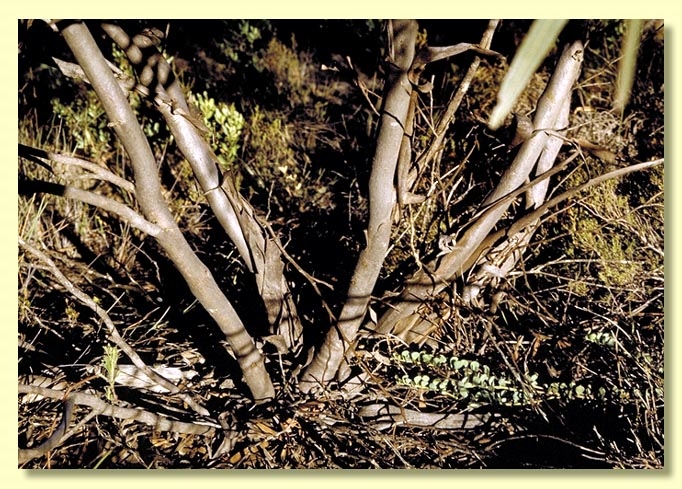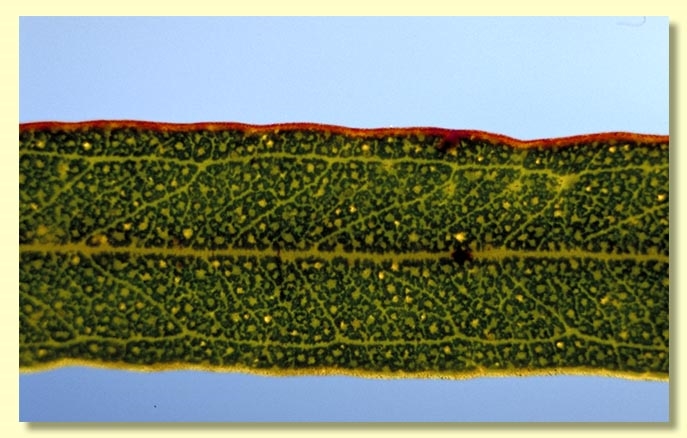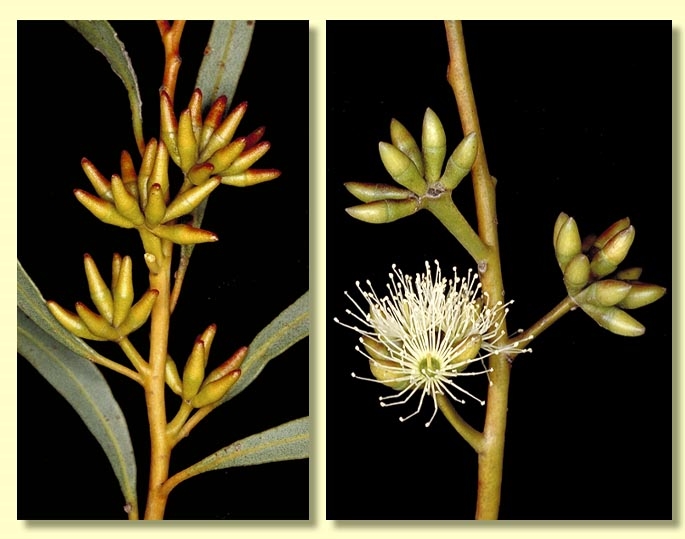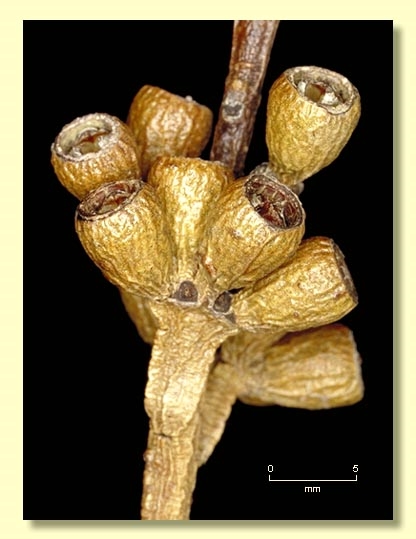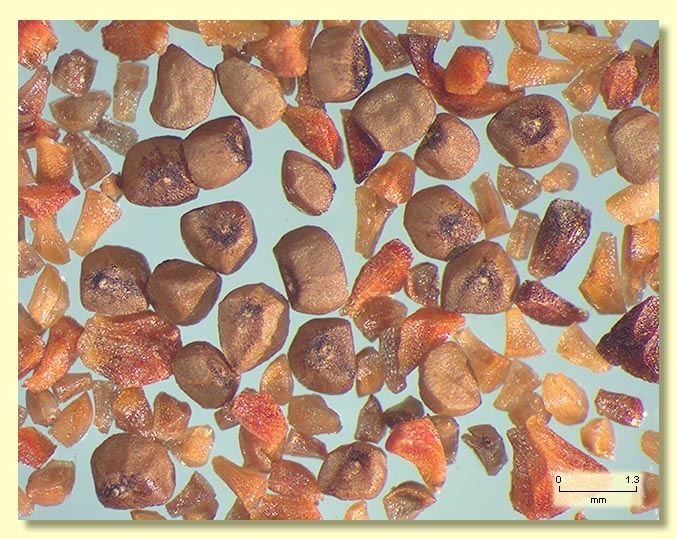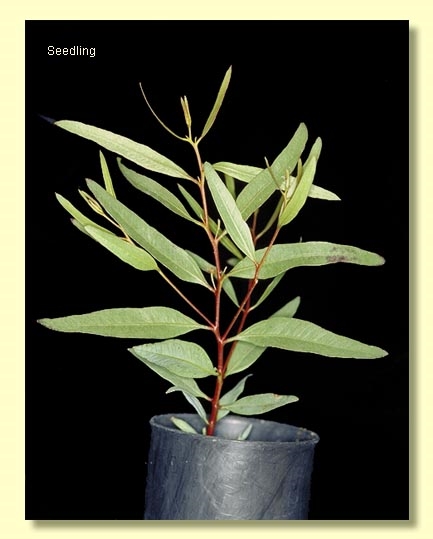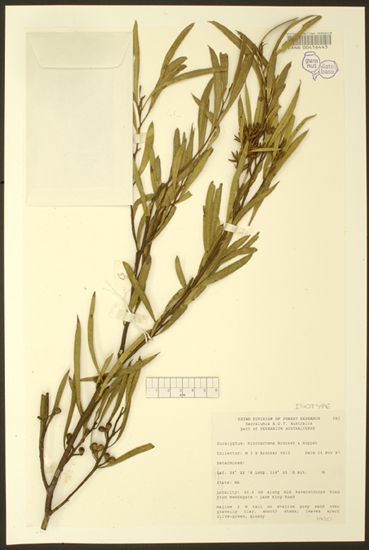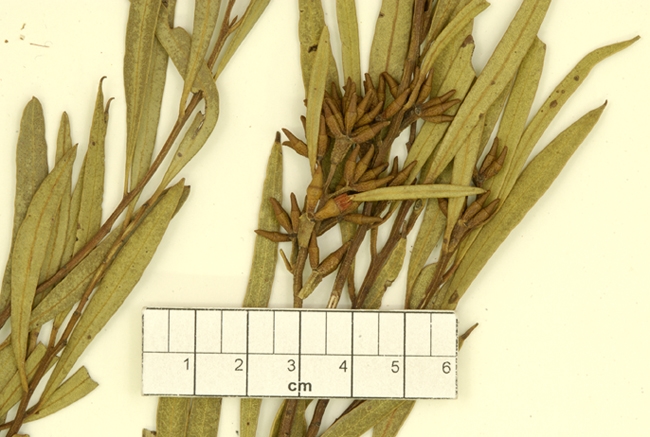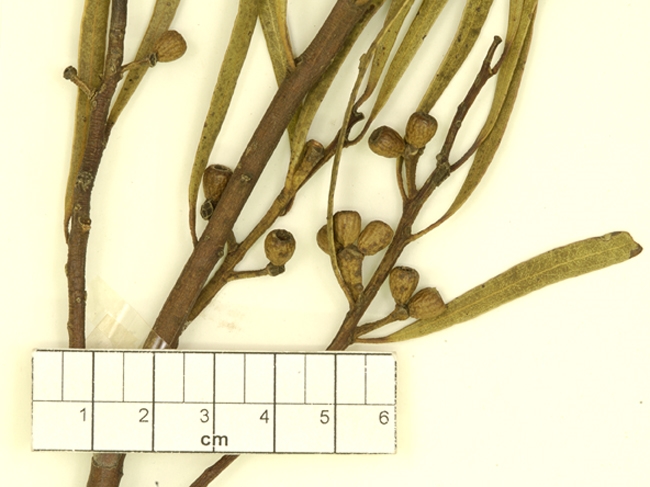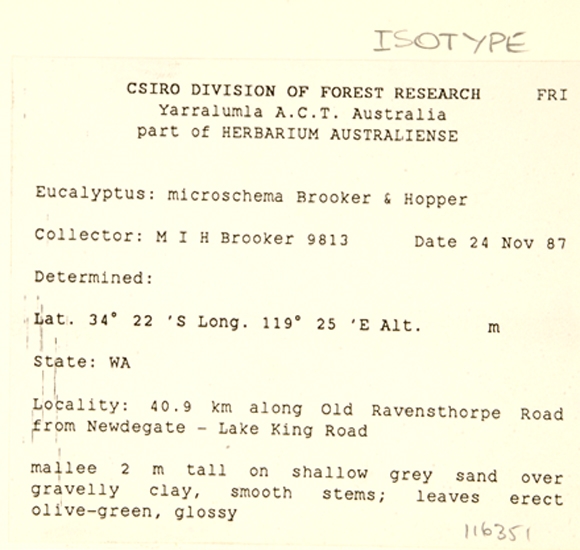Eucalyptus | Symphyomyrtus | Bisectae | Glandulosae | Levispermae | Cubiformes
Euclid - Online edition
Eucalyptus microschema
Mallee to 3 m tall. Forming a lignotuber.
Bark smooth throughout, dark and silvery grey over pink.
Branchlets have oil glands in the pith.
Juvenile growth (coppice or field seedlings to 50 cm): not seen.
Adult leaves held erect, alternate, petioles 0.4–1 cm long; blade linear, 5.5–11 cm long, 0.5–1 cm wide, base tapering to petiole, margin entire, apex acute, concolorous, dull or becoming slightly glossy with age, green, side-veins at an acute or wider angle to midrib or obscure, reticulation obscure or moderate to dense, intramarginal vein present, oil glands irregular, island and intersectional.
Inflorescence axillary unbranched, peduncles widening apically, 0.4–1.2 cm long, buds 9 or 11, shortly pedicellate (pedicels 0–0.3 cm long). Mature buds fusiform (0.7–1 cm long, 0.2–0.35 cm wide), scar present, operculum conical and attenuate, about twice the length of the hypanthium and slightly narrower than it at the join, stamens inflexed, anthers oblong, versatile, dorsifixed, dehiscing by longitudinal slits, style long and straight, stigma tapered, locules 3, the placentae each with 4 vertical rows of ovules. Flowers white.
Fruit sessile to shortly pedicellate (pedicels 0–0.1 cm long), shortly barrel-shaped, 0.4–0.7 cm long, 0.4–0.5 cm wide, disc descending vertically, valves 3, near rim level.
Seeds pale brown to straw-coloured, 0.8–1.5 mm long, usually cuboid, surface smooth, hilum ventral/terminal.
Cultivated seedlings (measured at node 10): cotyledons Y-shaped (bisected); stems square to rounded in cross-section; leaves shortly petiolate, opposite for ca 3–5 nodes then alternate, narrowly lanceolate to linear, 6–8.5 cm long, 0.8–1.3 cm wide, green.
Flowering has been recorded in May and November.
A small mallee endemic to Western Australia, restricted to the east and south-east of Newdegate extending towards Lake King, with a preference for heavy white clay soils. The bark is smooth and the adult leaves olive green, at first dull then maturing slightly glossy inside the crown.
Eucalyptus microschema belongs to Eucalyptus subgenus Symphyomyrtus section Bisectae subsection Glandulosae because the cotyledons are bisected, buds have an operculum scar and the branchlets have oil glands in the pith. Within this subsection E. microschema is one of a group of 14 species that form series Levispermae subseries Cubiformes, characterised by having smooth almost cuboid to sub-spherical seed (not spherical), flattened peduncles that widen apically and buds that are narrowly fusiform with some stamens erect and others variably deflexed, rarely all inflexed to some degree. (Of the species in series Levispermae only E. microschema, E. subtilis and E. desmondensis have no fully erect stamens at all within the bud.)
Within its area of distribution it is unlikely to be confused with any other species because of its shrubby mallee habit, erect green leaves and small fusiform buds (to 1 cm long) with the operculum slightly indented where it meets the hypanthium (base of the bud). Morphologically very close to E. subtilis, a taller mallee with narrower adult leaves, found south of Norseman to Peak Charles on red clayey soils. The erect, usually dull-leaved E. subangusta has buds similar in size to E. microschema but more bluntly fusiform and not narrowed at the join of operculum and hypanthium. It also has a more northerly distribution from Hyden to Kalbarri.


